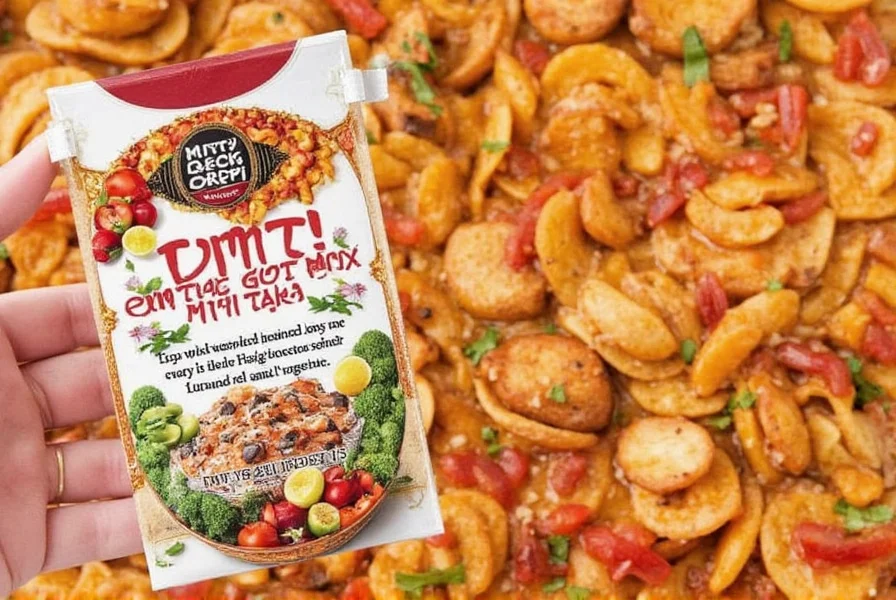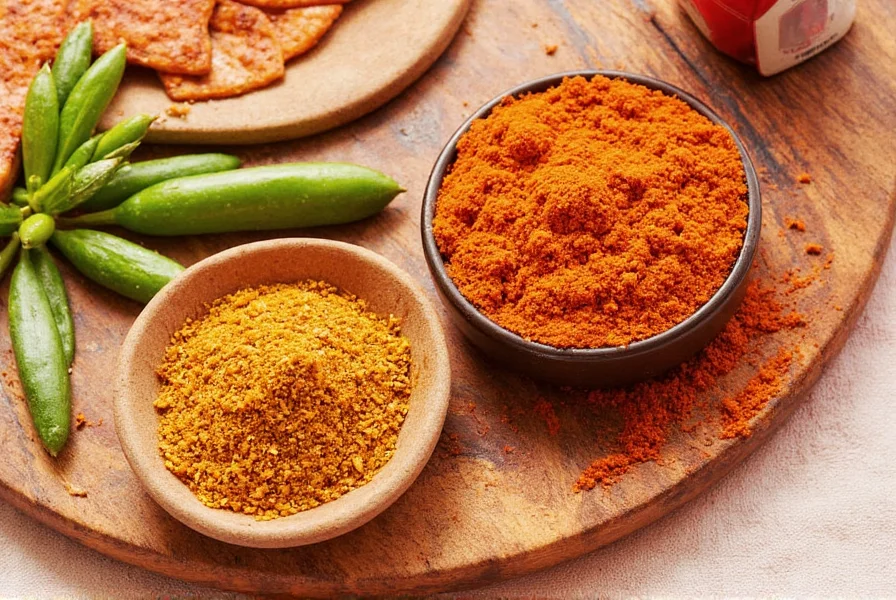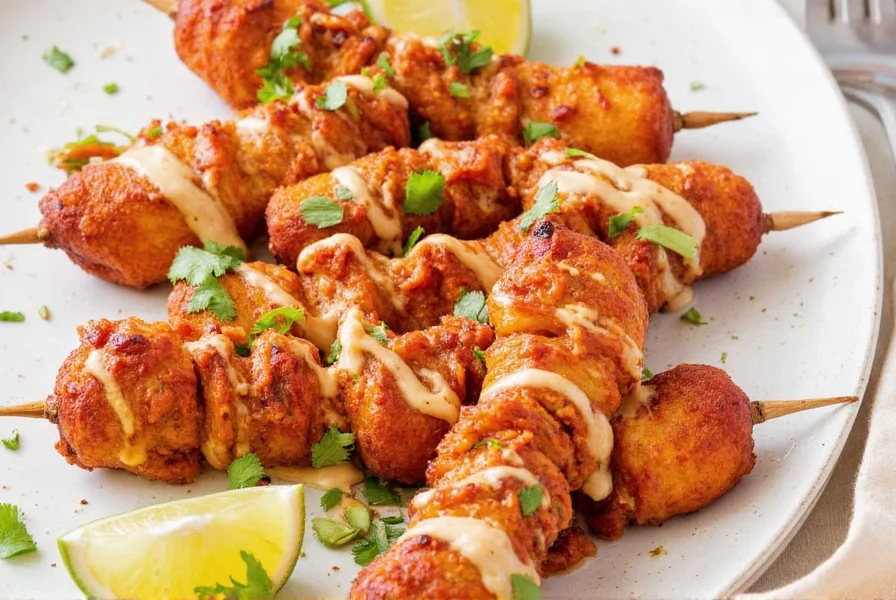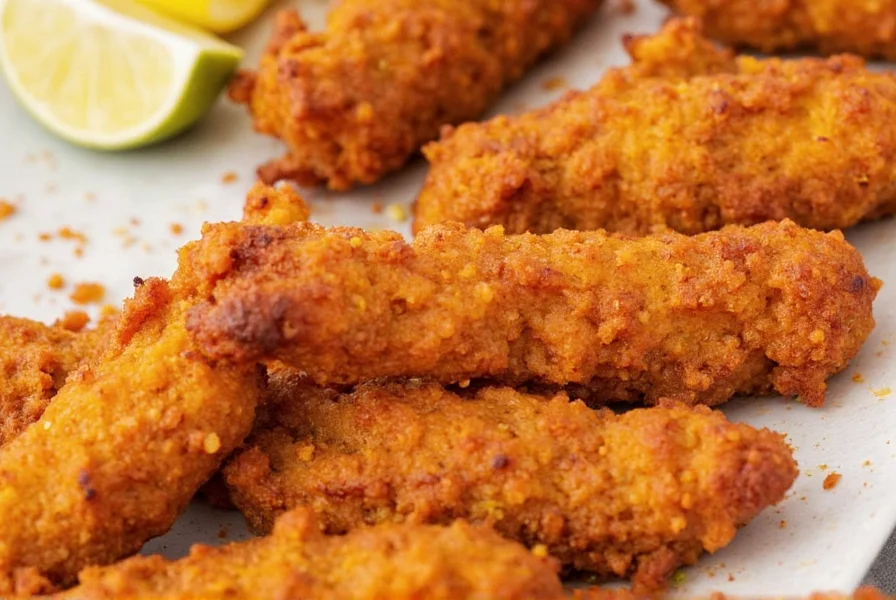Tandoori Mix: Spicy Secrets Behind the Flavor That's Taking Over Your Kitchen
Table of Contents
- Introduction
- What Is Tandoori Mix?
- Origins of Tandoori Mix
- Key Components of a Great Tandoori Mix
- Creative Ways to Use Tandoori Mix in Cooking
- Buying Guide: Top Tandoori Mix Brands Compared
- Pro Tips for Storing and Using Tandoori Mix
- Myth Busters: Common Misconceptions About Tandoori Mix
- The Future of Tandoori Mix in Global Cuisine
- Conclusion
Introduction
If you’ve ever bitten into a juicy piece of chicken tikka or a warm naan straight from the tandoor oven, you know the magic that is tandoori mix. But what exactly makes this spice blend so irresistible? Whether you're a seasoned chef or a curious home cook, this guide will walk you through everything you need to know about one of the most beloved spices in global cuisine.

What Is Tandoori Mix?
Tandoori mix, also known as tandoori masala, is a versatile spice blend traditionally used in Indian and Pakistani cuisines. It’s commonly applied to meats, vegetables, and even paneer before they’re cooked in a clay oven — the iconic tandoor. While there's no single recipe, most mixes contain a core group of spices that create its signature earthy heat and vibrant red color.
Why It's More Than Just Curry Powder
Don’t confuse tandoori mix with generic curry powder — they may share some ingredients, but their flavor profiles are worlds apart. Tandoori mix tends to be smokier, with a balance of tanginess and warmth, making it perfect for grilling and roasting.

Origins of Tandoori Mix
The history of tandoori cooking dates back thousands of years to Central Asia and the Indian subcontinent. The word 'tandoor' itself refers to the cylindrical clay oven used for baking bread and slow-roasting meat. The modern version of tandoori mix evolved during the Mughal era, when chefs began marinating meats in yogurt and spices before roasting them to perfection.
A Royal Recipe Turned Street Favorite
- Originally reserved for royal kitchens
- Now a staple in street food across South Asia
- Popularized globally by Indian restaurants in the 1980s

Key Components of a Great Tandoori Mix
While recipes vary by region and brand, most tandoori mixes include these essential ingredients:
| Spice | Flavor Profile | Role in the Blend |
|---|---|---|
| Kashmiri Chili | Mild heat, bright red color | Provides visual appeal and subtle kick |
| Cumin | Earthy, nutty | Adds depth and smoky warmth |
| Coriander | Sweet, citrusy | Softens stronger spices |
| Ginger & Garlic | Peppery, pungent | Enhances aroma and complexity |
| Yogurt (optional, in marinades) | Creamy, tangy | Helps tenderize proteins |

Creative Ways to Use Tandoori Mix in Cooking
Tandoori mix isn’t just for chicken! Here are five unexpected ways to use it:
- Grilled Vegetables: Brush eggplant, zucchini, or bell peppers with oil, sprinkle tandoori mix, and grill until charred.
- Popcorn Seasoning: Sprinkle a pinch over freshly popped popcorn for a fiery snack.
- Pasta Twist: Stir into creamy tomato pasta sauce for a fusion twist.
- Marinade Magic: Combine with lemon juice, oil, and yogurt to make an all-purpose meat marinade.
- Dips & Spreads: Add a teaspoon to sour cream or hummus for a spicy upgrade.
Buying Guide: Top Tandoori Mix Brands Compared
Choosing the right tandoori mix can elevate your dishes from good to extraordinary. Below is a comparison of popular store-bought options:
| Brand | Heat Level | Best For | Price Range | Unique Feature |
|---|---|---|---|---|
| MDH Tandoori Masala | Moderate | Classic tandoori chicken | $ | Authentic, traditional flavor |
| Bold Taste Premium Blend | High | Grilled dishes, kebabs | $$ | Natural smoke flavor added |
| Zayd Tandoori Mix | Mild | Families, milder palates | $ | Contains saffron for aroma |
| Rajah Tandoori Spice | Moderate | International dishes | $$ | Euro-friendly flavor profile |
| Organic Harvest | Mild to Moderate | Veggie lovers, health-focused | $$ | Organic and gluten-free |
What to Look for When Buying
- Ingredients: Opt for blends with whole spices ground fresh, not artificial colors or preservatives.
- Heat level: Match the spice level to your taste preferences or the dish you're making.
- Brand reputation: Stick to trusted names unless experimenting with small batches.
- Packaging: Airtight containers preserve freshness longer.
Pro Tips for Storing and Using Tandoori Mix
To keep your tandoori mix tasting its best:
- Store in a cool, dark place like a spice cabinet
- Use within 6–12 months for optimal potency
- Always use a dry spoon to avoid introducing moisture
- For intense flavor, toast the spices lightly before grinding
Myth Busters: Common Misconceptions About Tandoori Mix
Let’s clear up some myths floating around:
- Myth: Tandoori mix is always super spicy.
- Truth: Many blends are mild or medium-hot, depending on the chilies used.
- Myth: You need a tandoor oven to use it.
- Truth: Works perfectly in a regular oven, air fryer, or on the grill!
- Myth: Only for meat lovers.
- Truth: Delicious on tofu, cauliflower, mushrooms, and chickpeas too.
The Future of Tandoori Mix in Global Cuisine
As global palates become more adventurous, tandoori mix is finding its way into fusion dishes and fine dining menus. We’re already seeing it show up in pizza crusts, burger rubs, and gourmet fries. With sustainability trends pushing for fewer processed foods, homemade versions of tandoori mix are gaining popularity among conscious cooks.
Conclusion
Tandoori mix is more than just a spice blend — it’s a passport to bold flavors and cultural richness. Whether you're hosting a dinner party or spicing up your weekday meals, this aromatic powerhouse deserves a permanent spot in your pantry. Now that you've got the lowdown on buying, using, and storing it like a pro, go ahead and bring the fire of the tandoor into your own kitchen.











 浙公网安备
33010002000092号
浙公网安备
33010002000092号 浙B2-20120091-4
浙B2-20120091-4